One of the critical aspects of a successful brand is its ability to communicate with the audience efficiently. But how could you expect a thing (a brand) to speak with a living and breathing being (the audience) when no means of communication are available?
That’s where brand mascots come into play!
According to a survey conducted by Fortune, a whopping 54 percent of the world’s most admired companies use mascots as a means of communication in their marketing campaigns.
Companies like M&M’s and Nintendo know how to utilize the power of a corporate character and continue to captivate their customers regularly.
But having a brand mascot is more than just character design. In this article, we will tell you everything you need to know about mascots and how to create them step by step. Besides, we mention some key factors that make a mascot tick.
Check out our agency’s Brand Mascot service page to see how we are helping brands be present on different platforms using a brand character.
What is a brand mascot?
A mascot is a person, animal, or object adopted by a group as a symbolic figure, especially to bring them good luck. A brand mascot is like the glue that binds the soul of a brand to the heart of its clients. In the same way, they are like the messengers that carry the story and the value making the brand more understandable and relatable.
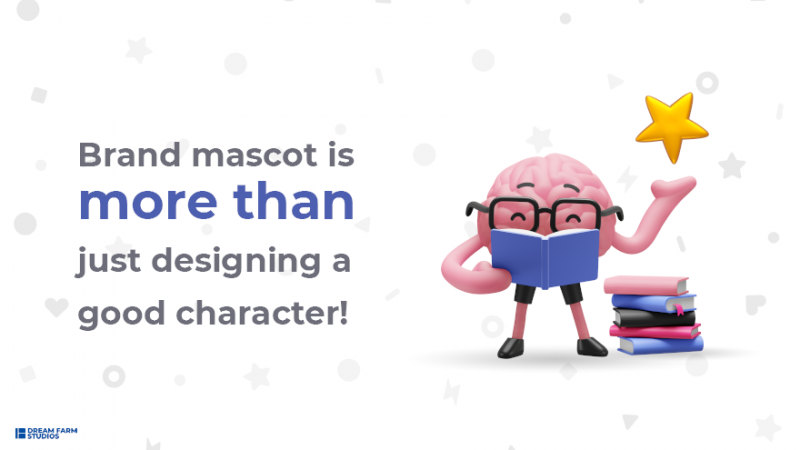
A mascot represents everything a brand stands for, and by doing so, helps to increase brand awareness and sales. Mascots also embody the tone, values, ethics, and emotions a brand is aiming for. But there is more to having a mascot than just branding. What makes the personified character so fascinating is psychological!
Recently, more companies have started using brand mascots in their transmedia storytelling campaigns. If you’re new to the topic, we recommend reading the article on transmedia storytelling before moving on to the next part.
How can company mascots add value (from a psychological perspective)
One of the things that make people attracted to a brand is familiarity.
If the brand looks and feels familiar in specific ways, it has a better chance of attracting new customers and turning the current customers into leads. In the same way, fictional brand characters resemble celebrities and make a brand more familiar, thus boosting marketing efforts.
Besides, these usually stylized characters give you infinite possibilities to create engaging and exciting content on social media or your website, landing pages, and blog posts. You can put them in different conditions, make them feel a certain way, and change their clothes on various occasions.
If you want to know more about this, head over to our psychology of character design guide. So how do you create a mascot that stands out? Let’s see.
How to create a mascot (Step-by-Step process)
- Mascot Conceptualization: The difference between an awesome mascot and a cheesy one comes down to three things:
- Visual storytelling: When looking, a mascot should describe a brand story visually through an animation storyboard, be it through colors, shape, gesture, or any other feature.
- Brand persona: Technically, a brand mascot creates a long-term relationship with the customer, so it should embody some of the clients’ characteristics.
- Character Psychology: Deep down, a mascot is like a brand ambassador, so it should possess all the qualities that brands and the target audience aim for.
The concept of your mascot is every feeling, goal, value, and idea you want to convey through your personified character. Therefore, this is a critical stage as it builds the momentum for great success in marketing your mascot.
Related article

2. Drawing and sketching
Almost all mascot designs start with a rough sketch because of the vital role of shape language in defining the character’s personality. Using different shapes and gestures requires specific examination. Artists go through this process according to the concept and the goal of the character.
3. Personification
Finally, It is time for the personification of your mascot. Here you are doing all the things that make your character feel like a real human being.
What are mascot branding characteristics?
Head over to the 2D animation workflow to see how mascots and characters are used in real-life scenarios.
You can add the following characteristic traits to humanize your character:
- Color Choose the colors of the character and add the details and shadows. Your colors will directly affect the way people interact with your mascot. If you want further information about choosing a color that follows the industry standard, take a look at our complete guide to color theory character design.
- Accessories Additional accessories like bracelets, belts, shoes, and bags give more personality to the character.
- Facial Expressions People are consistently moved and influenced by different emotions. Sad, happy, angry, surprised feelings give the viewer a reason to listen and think.
- Outfits Different occasions like Halloween or Christmas are great opportunities to have a different outlook for your mascot. This way, people can relate to the characters in every situation.
- Backgrounds Humans usually live in different environments or situations. You can design and put your character in various backgrounds to feel more natural and familiar to the audience.
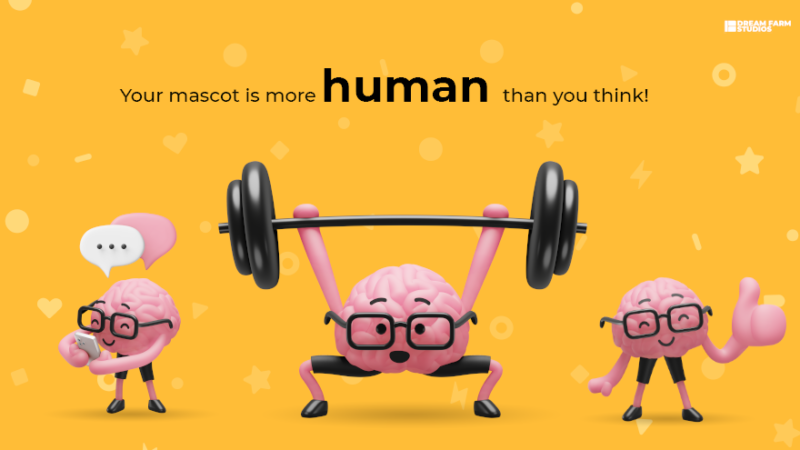
What are the different types of business mascots?
Mascots in the shape of 3D animation come in all shapes and figures. Some are humans, and some are animals or objects. Here we are elaborating on some of the most used mascots in the history of marketing.
- Humans
A lot of the brand mascots are stylized representations of a person (primarily the founder). Take KFC, for example; the logo illustrates Colonel Sanders along with some color tweaks. Using a human mascot makes a brand more familiar and relatable to the eyes of the consumer. The mascot can also be a fictional human character or a superhero like Max Steel – Mattel.
2. Animals
There are several reasons why a brand might pick an animal as a brand ambassador. Firstly, they represent some natural features of the product (for example, milk or meat). Secondly, animals signify the archetypal characteristics of a brand. (the tiger is assertive and confident, while the cat is cute and funny).
Brands like Twitter, Mailchimp, and Linux are among the companies that know how to take advantage of the power of animal mascots.
3. Objects
Sometimes the product is an object rather than a person or an animal. In this case, the object mascot is a better choice. A good indicator of a functional object mascot is that you don’t notice it’s an object. Why? Well, because there are sorts of human characteristics that the mascot has internalized.
Take a look at all the common mascots you probably took a glimpse of:

Some of The Most common mascot examples in marketing and advertisement
One of the reasons many brands use mascots in their marketing campaigns is that they have such immense power to make humans remember things. So when done correctly, corporate characters will make the most important aspects of a brand stick with the customer for a long time. Some of the best examples of mascots that found their way into advertising, leading to brand awareness, include:
M&M’s talking candies mascots
It is not possible to talk about Smarties and not think about M&M’s talking candies. There are different mascots for different flavors, making it a versatile option to promote on various campaigns. What is more, is that each color represents another aspect of M&M’s brand value.
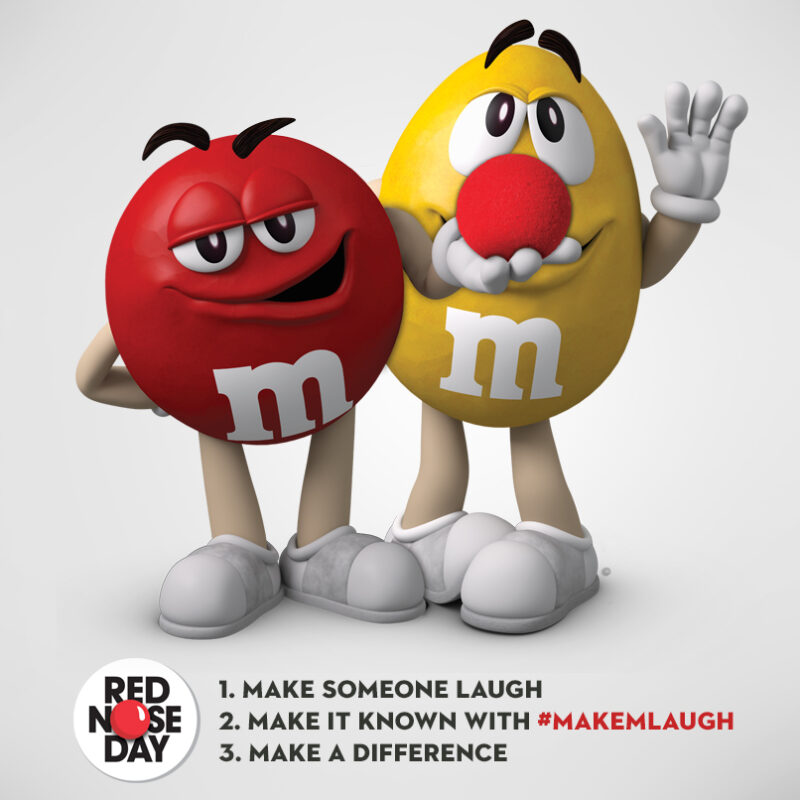
Duracell’s hyperactive bunny mascots
If you look at Duracell’s marketing campaigns, the rabbit mascot moves so fast and changes environments swiftly; This represents the speed and longevity of the batteries created by Duracell.
Firefox red fox mascot
Mozilla is one of the well-known brands that use its mascot for most of its digital and offline marketing campaigns. The visual expression of the red and orange fox is based on the principles of being bold and dynamic yet simple with a friendly, human spirit. These same principles guide the brand and product messaging and reflect the overall experience of the Firefox brand story.
If you look at our commercial animation studio page, you can see some of the best brand characters we have developed at Dream Farm.
4 Perks of using your brand mascot in social media
You might think to design a mascot is all about brand awareness and visual identity. Here are four other reasons you should consider having a brand character for maximum success:
1. They embody the spirit of your brand
A mascot is something beyond a mesmerizing cartoon character. You need your clients to pick up something about your organization with each bit of advertising, which means your mascot should signify the organization’s soul.
2. They increase brand engagement.
Mascots are an excellent method to connect with your target audience, and you can promote them on different social media channels.
3. Better online presence
Social Media is one of the most versatile and effective ways a brand can increase conversion. Using a well-designed mascot in your social media post and campaigns will have an immense effect on the outcome and brand awareness.
4. Diversity and Recognition
Companies usually come up with different strategies for content marketing. For example, you can go for influencer marketing and hire brand ambassadors to promote your products. However, having a brand mascot is something, not all brands land on; that’s precisely why you should consider it because of the diversity and the boldness it will bring you.
Should I hire a designer or an animation studio for mascot design? [BONUS TIP]
Here is the big question everybody seems to be asking, and many people go for hiring a freelance designer to create their mascot because it is cheaper. But keep this in mind:
Creating a brand mascot is not a single procedure; it requires a deep understanding of color psychology, brand story, and character design. a freelancer might want to outsource each step separately and since different people create every one of these steps, the result might not be ideal. For example, even if the freelancer provides high-quality design, he still has to storyboard and tie it to the brand message. So what happens is that you tend to get someone talented at one thing and just OK at rest. But when you hire an animation studio, you get a team of experts in their specific and the result would be more high quality. Still, you are the boss, and you can choose which one to go for.
The Future of Brand Mascots
Brand mascots have been used by businesses of all sizes to connect with customers and build brand awareness. In the future, brand mascots are likely to become even more important as businesses look for new and innovative ways to engage with their customers.
One way that brand mascots are likely to evolve is through the use of augmented reality (AR) and virtual reality (VR). AR can allow users to interact with a mascot in their real-world environment, while VR can transport users into a simulated world where they can interact with the mascot. This can be a great way to engage with customers and make the mascot feel more real and relatable.
For more information please see this article:
The Role of AR and VR in Bringing Brand Mascots to Life
How we lead brand mascot projects on Dream Farm Agency
At our animation studio, we believe in the power of art. We mix that with the power of communication at our Agency. For a long time, brands have shown to value and take advantage of a brand character superpower. If you’re interested, visit our agency’s brand mascot design portfolio page to check out the other mascots we worked on.
Below is an example of a mascot for Merident, a brand of toothpaste.
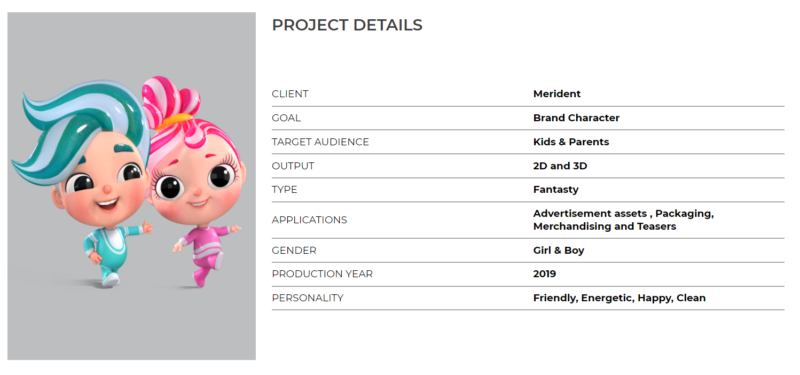
Firefox
Firefox lite browser got in touch with us to design a character. Below is an example of how we ended up doing it:
A few words to remember
Creating a brand mascot is a significant achievement that should not be underestimated. If you want the mascots to have the most long-lasting effect, you should try to use them consistently over a long period (on your social media posts or blog posts). Eventually, They will become the messenger of your brand, the noticeable element that your clients see and connect with. Not every brand has to utilize a personifying character to represent them. Still, it is a magnificent marketing tool. So, make it your best shot.

Arash Naghdi
Arash is the equivalent of Buzz in Toy Story when he goes to infinity and beyond, but never comes back! responsible for our blog and content marketing efforts, he always delights the audience with his tenacity and passion in creating the extraordinary.

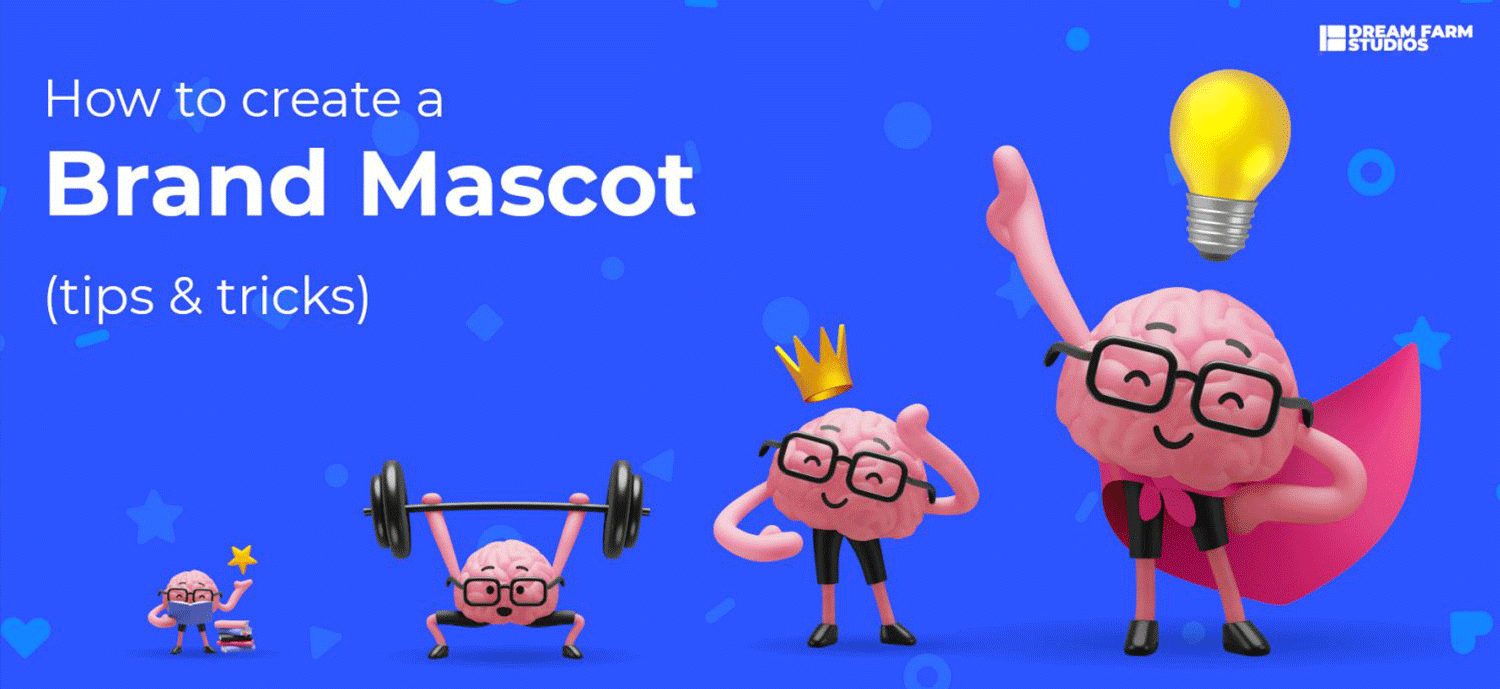

Thank you for the great info about brand mascot. I believe mascots are underrated in the marketing world as they can leverage brand awareness
I’m so thrilled to hear that Merilan, hope you like our other stuff too.
I think the idea that every brand needs a mascot is absurd. Mascots rarely gets noticed in the world of information overload. So every business needs to scrutinize and consider all the possibilities of the outcome., Thank you for shedding light on one of the most important topics of brand marketing.
Thank you for the great insight Thomas, you touched on something that a lot of companies are dealing with. I personally think every business owner needs to know the reason behind every kind of marketing move.
Thank you very much for the great breakdown. nice and informative article.
More and more brands are getting into brand mascots and I think every brand needs exactly why and how to make and introduce their brand character to their clients. Thx for the info
Hello thank you for the insight. I really like how you break down the process in small and tangible steps on creating a brand mascot.
I think there are more successful brand mascots than the ones mentioned here.
Hi, my company uses a brand mascot and we want more engaging posts that help convey the brand personality. How should we go about it better?
Hi there Yashvi, have you tried adding your brand mascot into the blog posts in different content formats?
This is one of the best articles I’ve read about brand mascot. Since most people are not aware of the name mascot specifically, and refer to it as brand character.
That’s right Anthony, that’s exactly the reason why we have a whole article only for brand mascot.
What happens if we already have a mascot for our brand but we don’t know how to launch it in the market? is there any techniques or strategies for that?
For that, you’re going to need some ideas about your brand identity in case of visuals and communiction. We’ll add more guides on how to launch a brand mascot on our blog soon.
Great article, looking at most of the successful brand in history, they have had mascots to build a rapport with the audience.
That is absolutely right Thomas, one thing to keep in mind is that not every brand needs a mascot. You have to keep in mind your strategy and the reason behind it.
I have a question in mind. Are brand mascots suitable for all brands or are there only specific brands like in food industry to have that?
That’s such a great question Phons, well not all brands need that. There is a complete process on how to do it effectively which we’ll cover very soon on our blog. Stay Tuned 🙂
I think not many people know how to use brand mascots in their marketing campaigns and that’s what we need to focus more on. I think it’s a good idea to cover that topic in the future.
That’s such a great recommendation, thank you Jona. We’ll cover that in future posts.